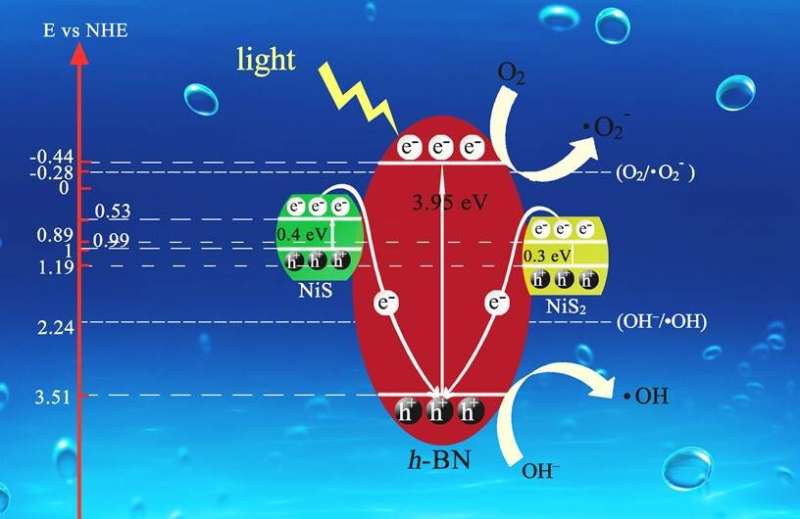The human health is suffering from effluent containing
heavy metal ions (such as Cr(VI)) and organic dyes (such as
rhodamine B). Among numerous strategies to remove pollutants from
water, photocatalysis has attracted extensive attention due to its
low energy consumption, simple operation and environmental
friendliness. Bimetallic sulfides are apt to form the
heterointerfaces which is able to modify the surface properties of
particles and enhance the stability and the photocatalytic
performances. h-BN has been proved to be a prospective support for
different composites because of its diversified sheet structure,
higher surface area, chemical resistance, can effectively increase
the accessible superficial area of loaded catalysts and supply
abundant active sites.
h-BN/NiS2/NiS nanocatalysts for removing rhodamine B and
Cr(VI) in wastewater



